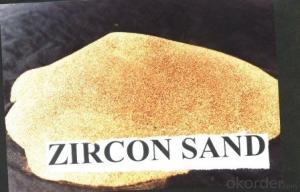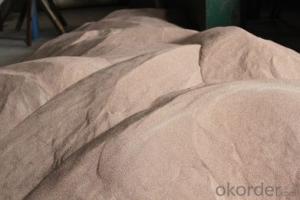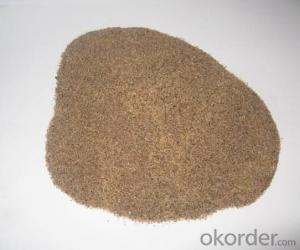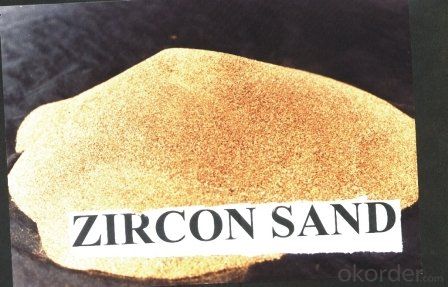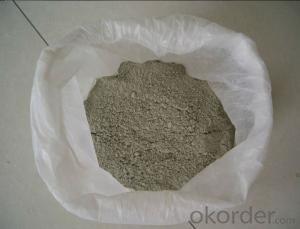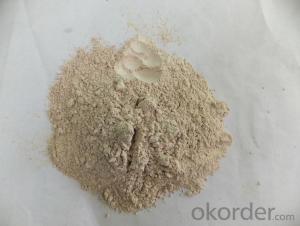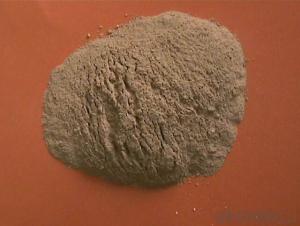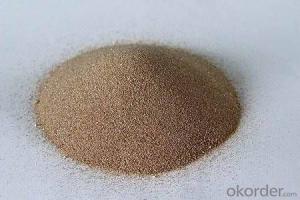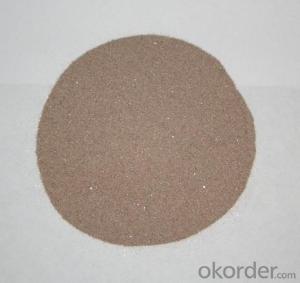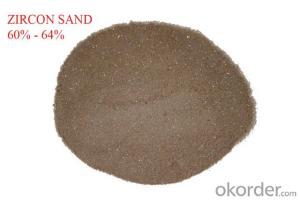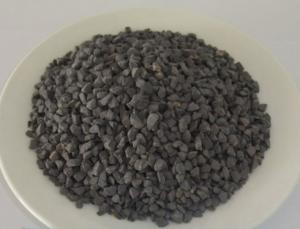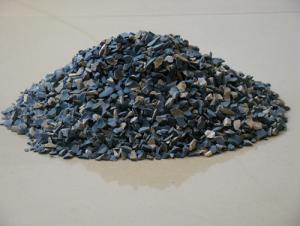Raw Materials for Refractory:Zircon Sands and Zircon Flour 66%-67% Good Performance
- Loading Port:
- Tianjin
- Payment Terms:
- TT OR LC
- Min Order Qty:
- 25 m.t.
- Supply Capability:
- 3000 m.t./month
OKorder Service Pledge
OKorder Financial Service
You Might Also Like
Refractory Material/ Zircon Sands and Zircon Flour Good Quality
1.Structure of Zircon Sand and Zircon Powder
We are offer zircon sand With Below Mention Descriptions: ZrO2 65 - 67 %. We are offer zircon sand With Below Mention Descriptions: ZrO2 65 - 67 %. Zircon is a remarkable mineral, if only for its almost ubiquitous presence in the crust of Earth. It occurs in igneous rocks as primary crystallization products, in metamorphic rocks and in sedimentary rocks as detrital grains.
Further, the mineral due to hardness, durability and chemical inertness, zircon persists in sedimentary deposits and is a common constituent of most sands.
2.Main Features of Zircon Sand and Zircon Powder
1 Tiny, round, solid ball shape provides greater surface area for improved performance and dispersion in its application
2 High refractory rating, lower specific gravity rating, and higher service temperature produces greater yield
3 With lower bulk density, it offers better air permeability for better performance as a result of its overall physical characteristics
3.Main usage of Zircon Sand and Zircon Powder
Ceramic Industries – Wall Tiles , Floor Tiles , Roofing Tiles
Sanitary Ware Industries
Pottery Industries
Porcelain Glazes
Frit for Glaze and Enamels
Ceramic Colour Industries
Admixture for Glass , Opal Glass
Picture Tube Industries
Foundries , Investment Casting Industries
Special Refractories , Castable Refractories
Zircon Bricks , Zirconium Oxide Industries
Epoxy Resin , Special Paints Industries
4. Zircon Sand and Zircon Powder Images

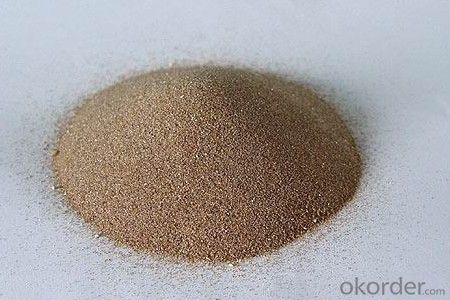
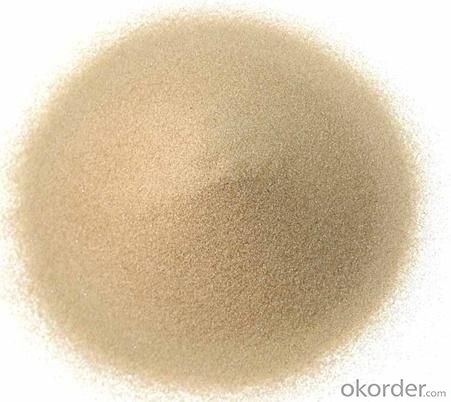
5. Zircon Sand and Zircon Powder Specification
1.The 80-120M zircon sand is used in investment casting, the processing is called dipping.
2.It can enhance the shell`s thickness.
3.It is specialize used in inner layer being mixed with silica sol.
4.We supply compititive price.
6.FAQ of Zircon Sand and Zircon Powder
1). Q: Are you a factory or trading company?
A: We are a factory.
2). Q: Where is your factory located? How can I visit there?
A: Our factory is located in China. You are warmly welcomed to visit us!
3). Q: How can I get some samples?
A: Please contact me for samples
- Q: what kind of refractories is used to make the industrial silicon furnace mouth long life?
- Fused zirconia corundum brick, the smelter of the glassworks is used this kind of lining, and you can contact by private letter.
- Q: what's the standard of fireproofing material?
- first, the classification of fire resistant levels of buildings, 1, the classification basis of fire resistant levels of buildings, the classification of fire resistant levels of buildings is one of the basic building fire protection technology measures, our national architectural design specification divides fire resistant levels of buildings into first, second, third and fourth class, first class ios the highest and has the most strong fire-resistant capacity, fourth class is the lowest and has the weakest fire-resistant capacity. Fire resistant level of buildings depends on the combustion performance and fire endurance of the components of the buildings. construction components refer to the wall, base, beam, column, floor, stair, suspended ceiling and other basic components of buildings. Combustion performance and fire endurance of building components are shown in table 4-11), the combustion performance of building components are divided into non-combustible component,hard-comnustible component,combustible?component,according to their response to the fire. as for building components, non-combustible component includes wall column and base,etc; hard-comnustible component includes hanging?bracket, suspended ceiling and internal pipe;combustible?component includes doors and windows, suspended ceiling, decoration materials,etc.
- Q: How about the prospect of refractory material?
- Due to the rise of raw material, the prospect is not good with inflation, lower prices and decreased profits. The product requirements have been enhanced and there is vicious competition. Therefore, it is really bad.
- Q: Which industry does the metallurgy and thermal insulating and refractory material belong to?
- It belongs to the refractory industry, which has its own trade association.
- Q: What is the role of the vermiculite fireproof material?
- The vermiculite fireproof slate is widely applied to construction, shipbuilding, metallurgy, electric power, aerospace and other fields by foreign countries. Vermiculite slate can be applied to furniture, firewall, ceiling, and can be used in the fire fighting access, coated steel, coated pipeline, real flame fireplace in the lining board, wall partition. It is characterized by non combustible, non melting, resistance to high temperature; permanent thermal insulation; sound insulation, non-toxic, smoke-free, green environmental protection; resistance to impact, good dimensional stability and durability of the excellent anti fungal infestation. It can be sawed, nailed, planed, drilled, it can be easily installed and constructed.
- Q: What is high alumina refractory?
- High alumina refractory: High alumina refractory products, with high refractoriness, compressive strength and refractoriness under load, it is used for masonry of a variety of large-scale blast furnaces such as steel furnace, air heating furnace and electric furnace, and for high-temperature parts of thermal equipment like rotary?kilns.
- Q: The principle of choosing fire-resistant material in Thermal Energy and Power Engineering equipment.
- What thermal equipment? The most simple principle is durable, low cost and with no environmental pollution.
- Q: What are the materials of class A fire resistant window?
- Environmentally friendily, non-poisoned non-peculiar smell, non-radioactive; non-combustible, fireproof, moisture-proof, corrosion-resistant; easy to operate, lightweight, high strength, themal insulation, sound insulation; able to be cut, planed, sawed and carved. It also meets GB8624 -2006A1 level non-combustible standards. Lightweight, high strength, anti-aging, corrosion resistance; meeting the GB / T20285-2006 Opium (AQ1) safety and environmentally friendly products; Foamed fire door core board specifications: 2100 × 900 × (26 ~ 65) mm; 2050 × 850 × (26-65), and many other specifications. I hope my answer can help you.
- Q: What is fire retardant coating mainly used for?
- The functions of refractory coating are as follows: 1. Non-intumescent fire retardant coating is mainly used for the fireproofing of wood, fiber board and other materials, and it is used in the surfaces of wood truss, roof, doors, windows and etc. Second, the intumescent fire retardant coating can be divided into non-toxic intumescent fire retardant coating, expansible fire retardant coating emulsions, solvent-based fire retardant coating. 3. Non-toxic intumescent fire retardant coating can be used to protect cables, polyethylene pipes and insulation board. 4, The expansible fire retardant coating emulsion and solvent-based fire retardant coating can be used for fireproofing of buildings, electricity power, and cables. 5. New fire retardant coating: Transparent fire retardant coating, water-soluble intumescent fire retardant coating, fireproof emulsion paint, polyvinyl acetate emulsion fire retardant paint, water-soluble intumescent fire retardant paint drying at room temperature, fire insulation coating polyolefin fire retardant coating, modified high chloropolyethylene fire retardant paint, chlorinated rubber fire retardant coating, firewall coating, intumescent coatings, wire and cable fire retardant paint, new fire retardant coating, casting fire retardant coating and so on.
- Q: What are the advantages of refractory material?
- Jingute WHL type, GDS type
Send your message to us
Raw Materials for Refractory:Zircon Sands and Zircon Flour 66%-67% Good Performance
- Loading Port:
- Tianjin
- Payment Terms:
- TT OR LC
- Min Order Qty:
- 25 m.t.
- Supply Capability:
- 3000 m.t./month
OKorder Service Pledge
OKorder Financial Service
Similar products
Hot products
Hot Searches
Related keywords
